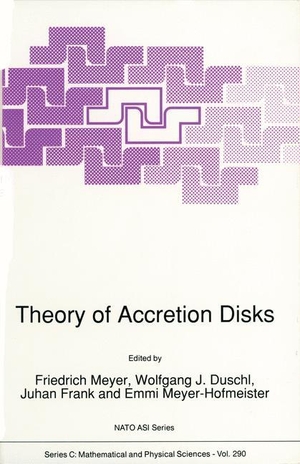Für statistische Zwecke und um bestmögliche Funktionalität zu bieten, speichert diese Website Cookies auf Ihrem Gerät. Das Speichern von Cookies kann in den Browser-Einstellungen deaktiviert werden. Wenn Sie die Website weiter nutzen, stimmen Sie der Verwendung von Cookies zu.
Cookie akzeptieren
Theory of Accretion Disks
- Springer Netherlands
- 2011
- Taschenbuch
- 496 Seiten
- ISBN 9789401069588
With the advent of space observatories and modern developments in ground based astronomy and concurrent progress in the theoretical understanding of these observations it has become clear that accretion of material on to compact objects is an ubiquitous mechanism powering very diverse astrophysical sources ranging in size and luminosity by many orders of magnitude. A problem common to these systems is that the material accreted must in general get rid of its angular momentum and this leads to the formation of an Accretion Disk which allows angular momentum re-distribution and converts potential energy into radiation with an efficiency which can be higher than the nuclear burning
Mehr
Weniger
zzgl. Versand
in Kürze